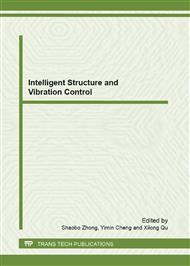[1]
R. Will Restructuring lattice theory: an approach based on hierarchies of concepts. In: RivalI, editor, Ordered sets, Reidel, Dordrecht-Boston (1982), pp.445-470.
DOI: 10.1007/978-94-009-7798-3_15
Google Scholar
[2]
B. Ganter, and R. Wille: Formal Concept Analysis. Mathematical Foundations. Berlin: Springer, (1999).
Google Scholar
[3]
Z. Pawlak: Rough sets. International Journal of Computer and Information Sciences, vol. 11 (1982), pp.341-356.
Google Scholar
[4]
Z. Pawlak: Rough sets. Theoretical Aspects of Reasoning about Data. Dordrecht: Kluwer Academic Publisher (1991).
Google Scholar
[5]
J.P. Wang and J.Y. Liang: Concept Lattice and Rough Set. Shanxi University (Natural Science) , vol. 26 (2003), pp.307-310.
Google Scholar
[6]
K.Y. Hu: The data mining method based Concept lattice and rough set. Beijing: Tsinghua University (2001).
Google Scholar
[7]
K.Y. Hu and Y.C. Lu: Concept lattice and its application. Tsinghua University (Natural Science) vol. 40 (2000), pp.77-81.
Google Scholar
[8]
Z.Z. Shi: Knowledge Discovery. Beijing: Tsinghua University Press (2002).
Google Scholar
[9]
K.Y. Hu and Y.C. Lu: Rough Set Theory and Its Applications. Tsinghua University (Natural Science) vol. 41 (2001), pp.64-68.
Google Scholar
[10]
L. Wei and J.J. Qi: Concept Lattice and Rough Set Relations. Computer Science vol. 33 (2006), pp.18-21.
Google Scholar
[11]
S.P. Dai and T. He: Concept Lattice and Rough Set Data Analysis. Computer Engineering and Design vol. 29 (2008), pp.1423-1425.
Google Scholar
[12]
Y.Q. Wang and F.C. Lu: Synthetic fault diagnosis method of power transformer based on rough set theory and Bayesian network. Proceedings of the CSEE vol. 26 (2006), pp.137-141.
Google Scholar
[13]
X.Y. Lu and J.L. Zhang: A method of risk rule mining in IT project based on rough set and bayes theory . Computer Engineering and Applications vol. 22 (2006), pp.12-15.
Google Scholar
[14]
Q. Wen and H. Peng: Virus detection based on rough set and bayes classifier. Journal of Southwest Jiaotong University vol. 40 (2005), pp.659-662.
Google Scholar
[15]
Y.L. Zhu and L.Z. Wu: Synthesized diagnosis on transformer faults based on bayesian classifier and rough set. Proceedings of the CSEE vol. 25 (2005), pp.159-165.
Google Scholar
[16]
Z. Pawlak: Rough sets. Theoretical aspects of reasoning about data. Kluwer Academic Publishers, Boston, London, Dordrecht (1991).
Google Scholar
[17]
B. Yu and B.P. Yan: On rough set attribute reduction and application of evolutionary algorithms. Microelectronics and Computer vol. 22 (2005), pp.189-194.
Google Scholar
[18]
W.X. Zhang: Uncertain decision-making based on rough set. Beijing: Tsinghua University Press (2005).
Google Scholar
[19]
B. Shao and L.L. Wu: One rough set reduct for incomplete information system vol. 24 (2007), pp.204-207.
Google Scholar


